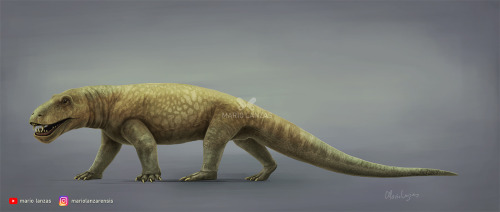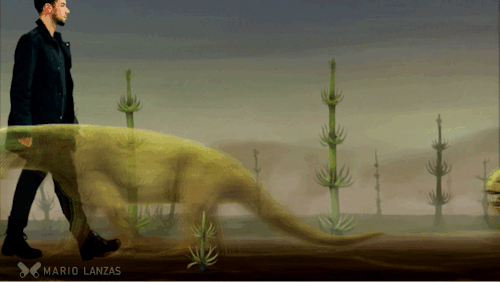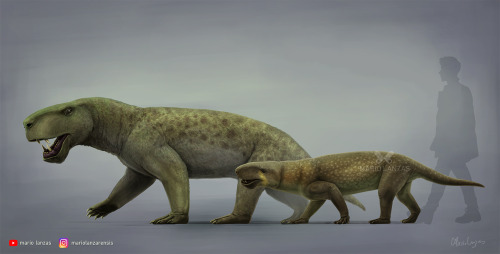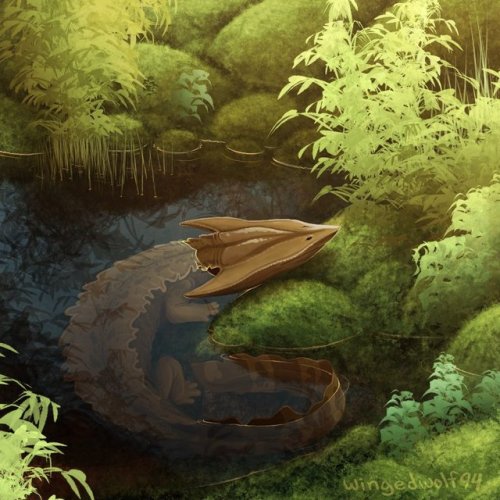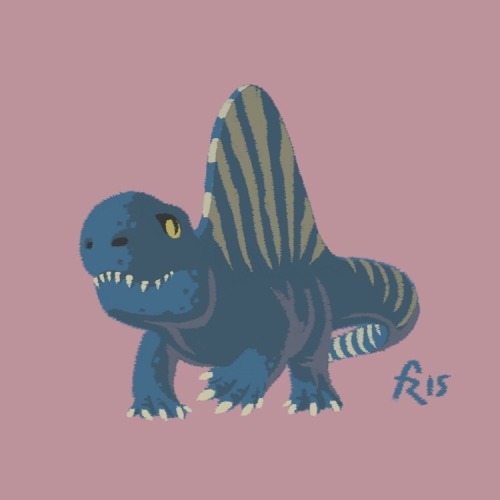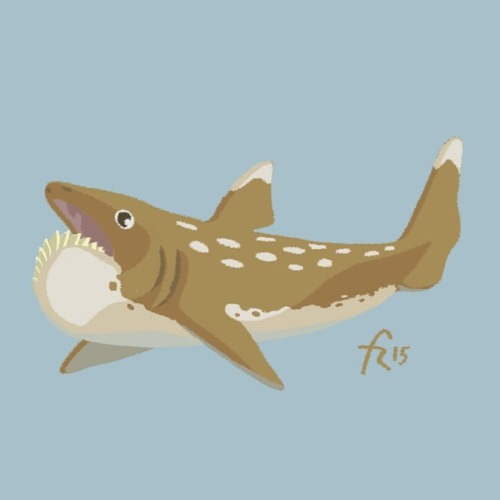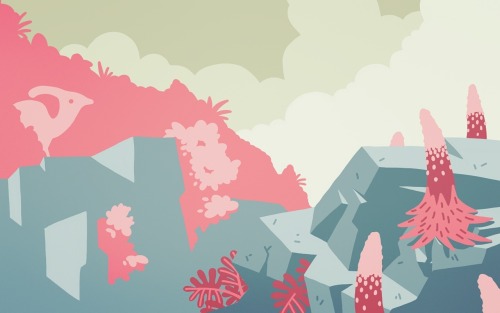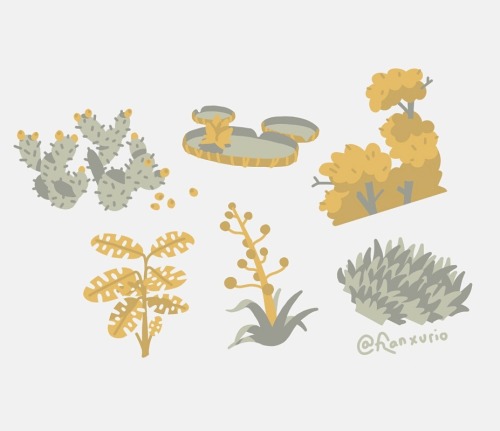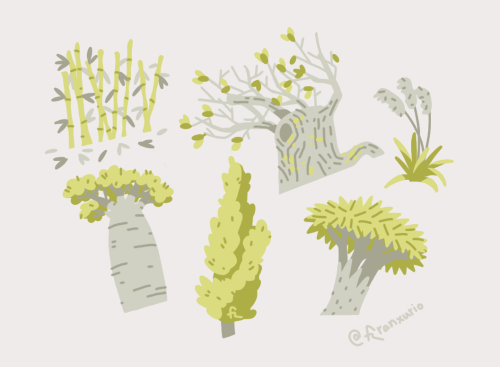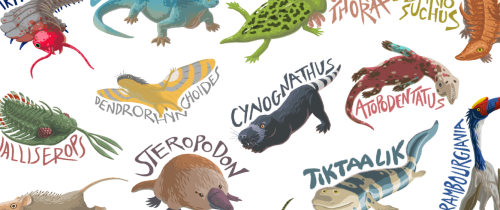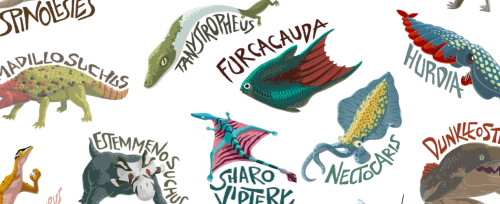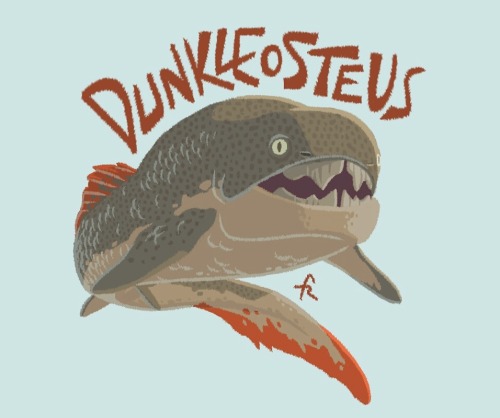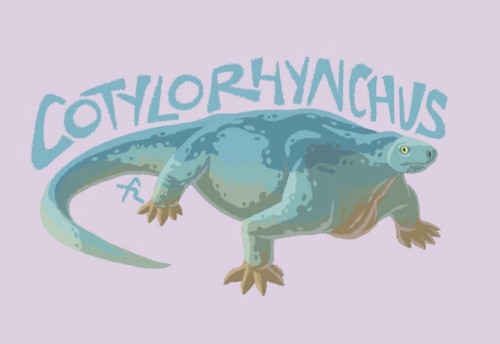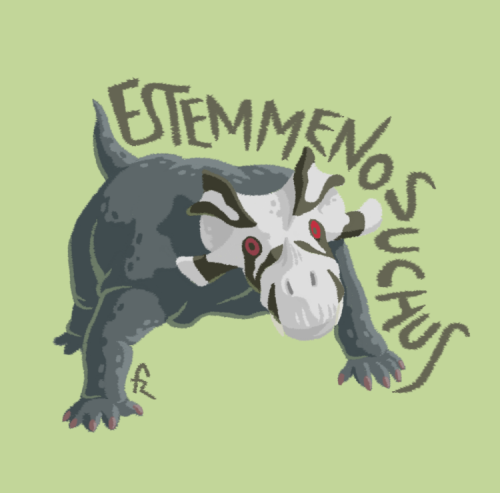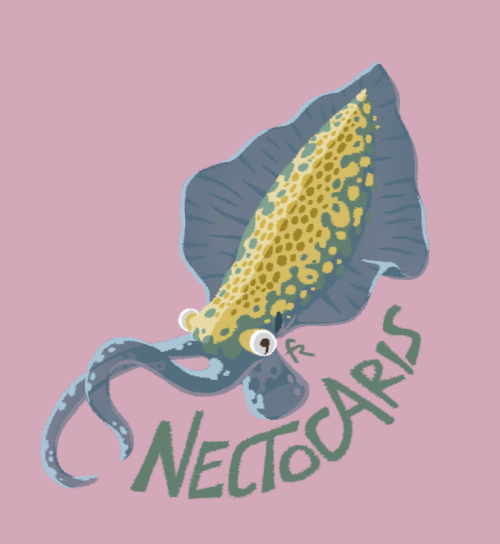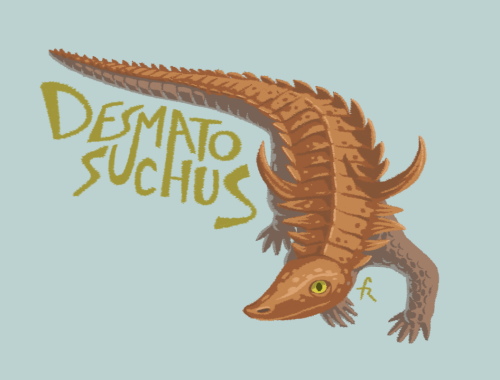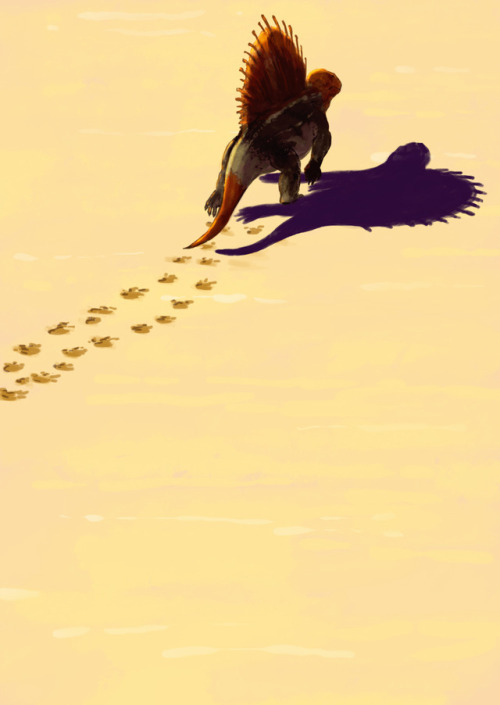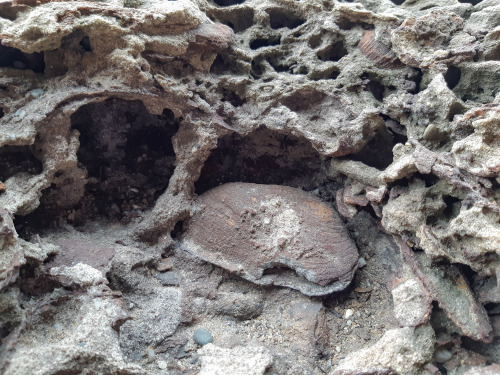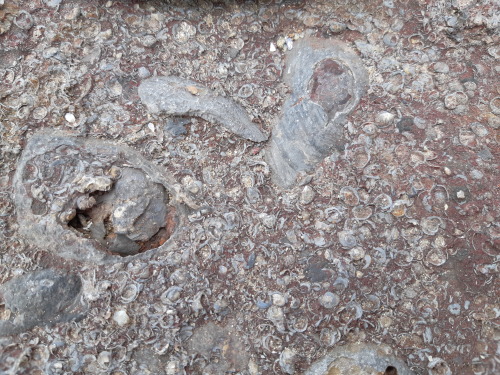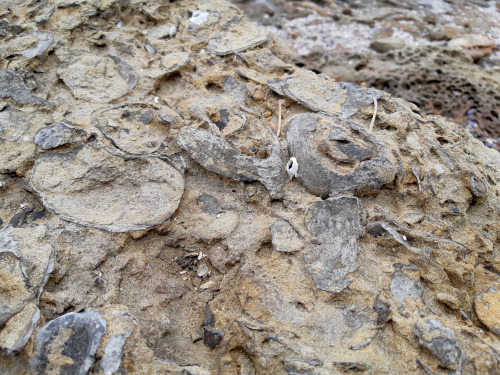#permian
TITANOPHONEUS
Dinocephalian of the midddle Permian found in Russia. Featured on my latest video on Synapsida along with many others.
___
Post link
EOTITANOSUCHUS
It might look similar to gorgonopsids, but this Synapsid was more primitive. Featured on my latest video on Synapsida along with many others.
___
Post link
INOSTRANCEVIAandGORGONOPS
From my latest video on Synapsid along with many others.
___
Prints and more paleoart Merch
Post link
Heraldic Inostrancevia
available for Stickers, T-shirts, Phone cases and more here
____________
Prints and more paleoart Merch
Post link
Permian Bestiary
Previosly I made a series of Bestiaries including animals of the Mesozoic, along with maps for each period in a Medieval-ish style. Here is now the Permian version. Available at Redbubble for prints and more
Post link

Survive unisex t-shirt
At first I was afraid, I was petrified…
If Lystrosaurus survived the greatest mass extinction event on Earth, you can probably make it through the week!
sulc.us/survive
Design by David Orr

Dimetrodon unisex t-shirt
Dimetrodon was a predatory non-mammalian synapsid from the early Permian, and definitely not a dinosaur.
Design by Greco Westermann

PART 1:
https://zobiez.tumblr.com/post/679558795075239936
I FINALLY finished part 1 of the Evolution of Life poster that I was doing for my class-
It was originally supposed to be in color pencil
However, I think I will redraw it traditionally as a side project
My problem with this is that some of the animals in this poster look way too similar to the references I used and that bothers me
Throws off the consistency
Idk man I really want to redraw it the way it was intended one day
Without worrying about a deadline
Take it anyway- this took so long lmao
Cotylorhynchus
Fossil specimen on display at the American Museum of Natural History
Reconstruction by Hirokazu Tokugawa
When: Permian (~299 to 265 million years ago)
Where: North America
What: Cotylorhynchus is a member of one of the most basal groups of synapsids, the Caseidae. Cotylorhynchus was a herbivore, and reached lengths of up to 20 feet (~6 meters) long, with a massive barrel chest, putting weight estimates at around 2 tons. This animal is very large for its time… well at least its body is. Cotylorhynchus has one of the most extreme cases of ‘tiny head’ I have ever seen. Even more so than the sail-backed Edaphaosaurus! Which is closer to modern mammals than Cotylorhynchus is. It is one of the most primitive animals known that unambiguously falls on the synapsid lineage. It is so basal that it does not even have any differentiation seen in its dentition, though there are less teeth than found in the non synapsid contemporaries of this wee-headed creature.
Post link
Ophiacodon
Mounted specimen on display at the American Museum of Natural History, NYC.
Reconstruction by Dmitry Bogdanov
When: Late Carboniferous to Early Permian (~305 - 280 million years ago)
Where: North America
What:Ophiacodon is a basal synapsid, meaning it is more closely related to mammals than modern reptiles. It was a fearsome predator of its day, with a long snout (over half of its skull length) full of pointy teeth. These teeth are so sharp that they are reminicent of the fangs of snakes - the name Ophiacodon means ‘Snake Tooth’. Ophiacodon reached up to 10 feet (~ 3 meters) in length and is thought to have preyed upon its fellow tetrapods rather than insects, as many previous predators focused on.
Ophiacodon occurs very early in synapsid evolutionary history, it is even more basal than the ’sailbacks’; almost at the base of the spilt between the major living aminote clades. Ophiacodon is part of the group Ophiacodontidae, which ranged from Mid Carboniferous to the Early Permian. About a half dozen genera are known for this group, and they all were good sized predators. Ophiacodontids and other basal synapsid clades were once grouped together under the name pelycosaurs, however, this group is not monophyletic/a natural group. That means that some synapsids that were held as pelycosaurs are more closely related to mammals than they are to other 'pelycosaurs’. 'Pelycosaurs’ can be though of as an evolutionary grade in the synapsid lineage; these are the members of our group that more closely resemble reptiles - they had sprawling gaits and their their teeth were not differentiated - there is not even a distinct canine. Ophiacodon and its kin are assuredly synapsids, however, as shown by the single opening behind their eye sockets - their single temporal fenestra.
Post link
The water is like a blanket in the morning; it comforts and soothes, presses slight weight on the body, and envelops in a way that brings a primal comfort. Had Diplocaulus the memories, it might liken the pond to the warm fluids in which it swam within the jelly-egg from which it once hatched.
Post link
Landscapes, plants and rocks
(http://www.facebook.com/franxurio,http://www.instagram.com/franxurio)
Post link
Cause Prehistory isn’t just about dinosaurs, I made a poster with every ‘Dinovember Without Dinosaurs’ illustrations that I’ve been drawing during last month. Hope you like it!
If you want one, you can purchase it here: http://www.redbubble.com/people/franxurio/works/18506216-dinovember-without-dinosaurs-2015?c=459839-dinovember-without-dinosaurs
And here: https://society6.com/product/dinovember-without-dinosaurs_print#1=45
Post link
Fourth round of my ‘Dinovember with no dinosaurs!’ More of my stuff in FB: https://m.facebook.com/Franxurio/ and Instagram: https://instagram.com/franxurio
Post link
Third round of my ‘Dinovember with no dinosaurs!’ More of my stuff in FB: https://m.facebook.com/Franxurio/ and Instagram: https://instagram.com/franxurio
Post link

LAST CHANCE to adopt a huggable Permian fossil! https://paleopals.square.site/
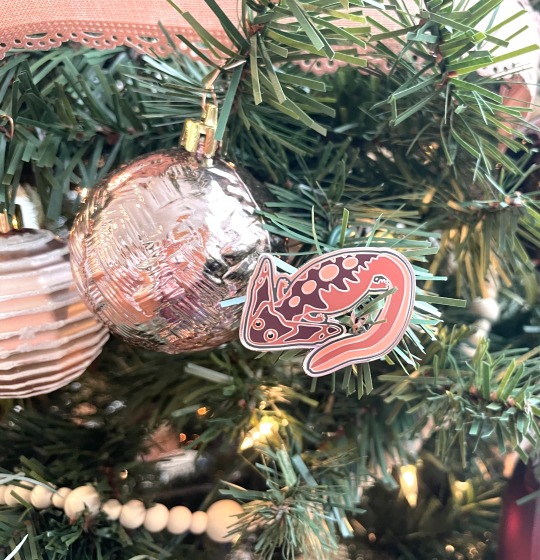
Get your prehistoric amphibian pins here: https://paleopals.square.site/#EyzKjP

Digging for gifts for your science minded friend? Look no further than the cutest fossil from Permian! https://paleopals.square.site/

Adopt your own Permian friends at: https://paleopals.square.site/#EyzKjP
Broken shells
As you would find some broken-up shells on the beach today, these are just a few pieces of ancient sea shells from about 300 to 250 million years ago, preserved in the rocks which used to be a sea bottom sediment.
Ulladulla, Australia
Post link
Rocks out of place
Why are these rocks out of place? They just do not fit the environment in which they are. The sea waves that moved the medium to coarse sand that is now the sandstone that surrounds these boulders, are not strong enough to move boulders. There is a huge contrast in mass between the sand and the boulder. So, the only explanation is they were placed here by some other means. For this reason, such rocks are called ‘dropstones’, as they were dropped/placed into their current position, rather than being transported along with the surrounding sediment.
One explanation how this could have happened, is the sea ice. During Permian (~300-250 million years ago) this region was under ice age conditions, with glaciers covering the continent from land to sea. So, whether it was glaciers sliding into the sea, or sea ice enveloping loose boulders around the coast and moving them off into the sea; it is impossible to say exactly. But, because ice floats on water, it provides a good candidate for a mechanism of moving these heavy boulders from the land to the sea bypassing the sea wave transport.
Ulladulla, Australia
Post link
Do not be fooled by this incredibly well preserved shell, it is not a recent shell, but a 250 million year old fossil.
Many different mollusc fossils are very well preserved at this outcrop which consists of layer upon layer of sediment which slowly accumulated on the sea floor during Permian times. Organisms such as this one, would have thrived here, feeding on the organic matter settling down to the bottom of the sea.
Southcoast NSW, Australia
Post link
Giants among the Lilliputians, some diversity in size of bivalves among the sea bottom dwellers from Permian times (~250 million years ago).
Example from south coast NSW, Australia.
Post link
Ancient sea bottom exposed along a modern seaside rocky platform. This immense amount of fossilized shells is preserved in ~250 million year old sea sediments which would have been a feeding grounds for all these bivalves.
South coast, NSW, Australia.
Post link

